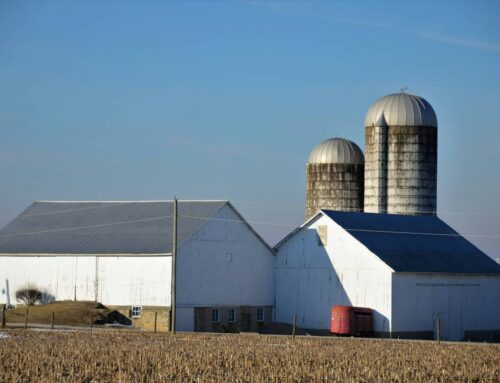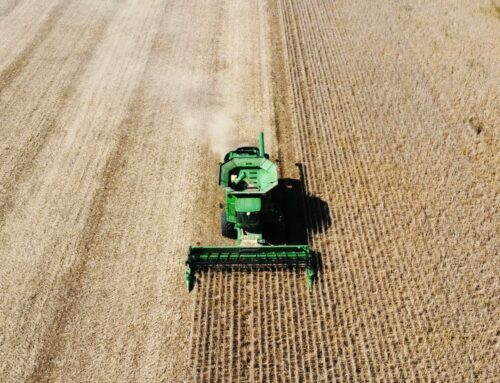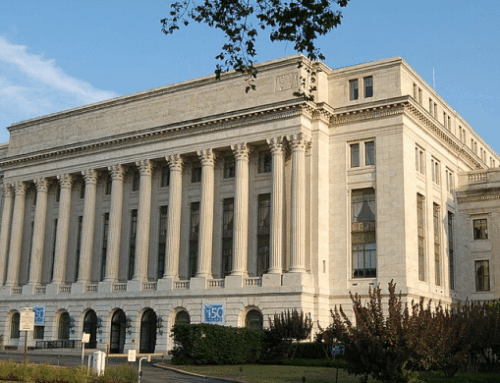It’s easy to forget that not everyone’s plugged into the sausage-making process of producing federal policy. Big ticket issues like health care, border walls, and executive orders dominate the headlines, but there is plenty of work on other important, and expensive, policy areas.
Case in point, the farm bill. Passed approximately every five years, both the House and Senate Agriculture Committees are months into the process of reauthorizing this trillion-dollar suite of programs. It’s important to remind folks why taxpayers should be involved in production of this largely misunderstood piece of legislation. Unless you’re the rare soul who does not eat.
Washington has routinely passed legislation to aid people engaged in farming and ranching since the Agricultural Adjustment Act of 1933 was adopted to assist farmers whose livelihoods were, figuratively and literally, blown away by the Great Depression and Dust Bowl. At the time nearly a third of Americans lived and worked on farms, and federal policy created planting restrictions, low cost loans, and government guaranteed prices for crops in an attempt to raise agricultural incomes. As the economy increasingly mechanized and urbanized, farm bill writers evolved as well. In 1973, seeking to expand support for farm bills beyond population-losing farm districts, programs providing food aid for impoverished households were incorporated in the farm bill. The resulting urban-rural alliance has been key to every farm bill since including the most recent Agricultural Act of 2014. The alliance and continued changing nature of agriculture has, however, produced an interesting set of circumstances and need to reform the agricultural safety net.
While colloquially called the farm bill, the vast majority of farm bill spending actually occurs far from the field. The Supplemental Nutrition Assistance Program (SNAP), or what used to be called food stamps, constituted nearly 80 percent of the projected cost of the $954 billion 2014 farm bill. While spending on SNAP has been less than anticipated, in 2016 the average monthly participation rate was nearly 43 million at an annual cost of $71 billion. The sheer size of SNAP and debates about what to do (or not) about it, has overshadowed an important fact for the $20 billion or so in annual spending on the agricultural side of the farm bill: most farmers and ranchers don’t actually receive support from the farm bill.
The USDA indicates there are 2 million farms. Yet only 16 percent of farmsparticipate in the most prominent financial support for agriculture—the $8.5 billion per year federally subsidized crop insurance program. In addition only 28 percent of farms receive tax dollars from either the various “commodities” programs that supplement the incomes of growers of a couple dozen grains and oilseeds (mainly corn, soybeans, wheat, and rice) or from farm bill conservation programs; which spent a combined $12 billion in 2016. According to USDA’s most recent numbers, fully 72 percent of farms received $0 in farm payments in 2015.
The vast majority of “farm households” receive no support from farm programs because USDA’s definition of a “farm” is outdated. USDA defines a farm as any place that normally can produce and sell at least $1,000 of agricultural products in a given year. You don’t actually have to produce and sell, you just need the potential. That’s why nearly 60 percent of all so-called farms are places where the owners are either retired (16.8 percent) or make their living off-farm (42.2 percent). Like it or not less than 10 percent of farms, those making at least $350,000 in annual sales, produce the bulk of agricultural products. In fact the 59,000 farm businesses that generate more than $1,000,000 in annual sales represent just 3 percent of farmers, but 50 percent of sales. The mom and pop farmer scratching out a living glorified in American Gothic has mostly been replaced by technologically savvy operations farming ever larger number of acres. And it’s these operations that get taxpayer subsidies.
The truth is taxpayers actually don’t know exactly who benefits from farm program spending because the agriculture committees refuse to disclose that information. Groups have in the past been able to FOIA the names of commodity and conservation program recipients. But since in recent farm bills the agriculture committees inserted a provision prohibiting USDA from releasing information on the beneficiaries of federally subsidized crop insurance. Showing true disdain for transparency, the final 2014 farm bill even eliminated a provision that would have kept this provision in place but required USDA to disclose only Members of Congress and Cabinet Secretaries that receive crop insurance subsidies.
Farm bills routinely cost more than promised, but the 2014 bill was supposed to be different. Three years into the bill, conservation and nutrition programs are much cheaper than anticipated, while promised savings in programs subsidizing agricultural incomes are failing to materialize. While there are many other pressing issues, taxpayers can’t afford to ignore farm bill deliberations.
Taxpayers need a better understanding of exactly who benefits from farm bill programs if we’re going to produce safety nets we can afford.










